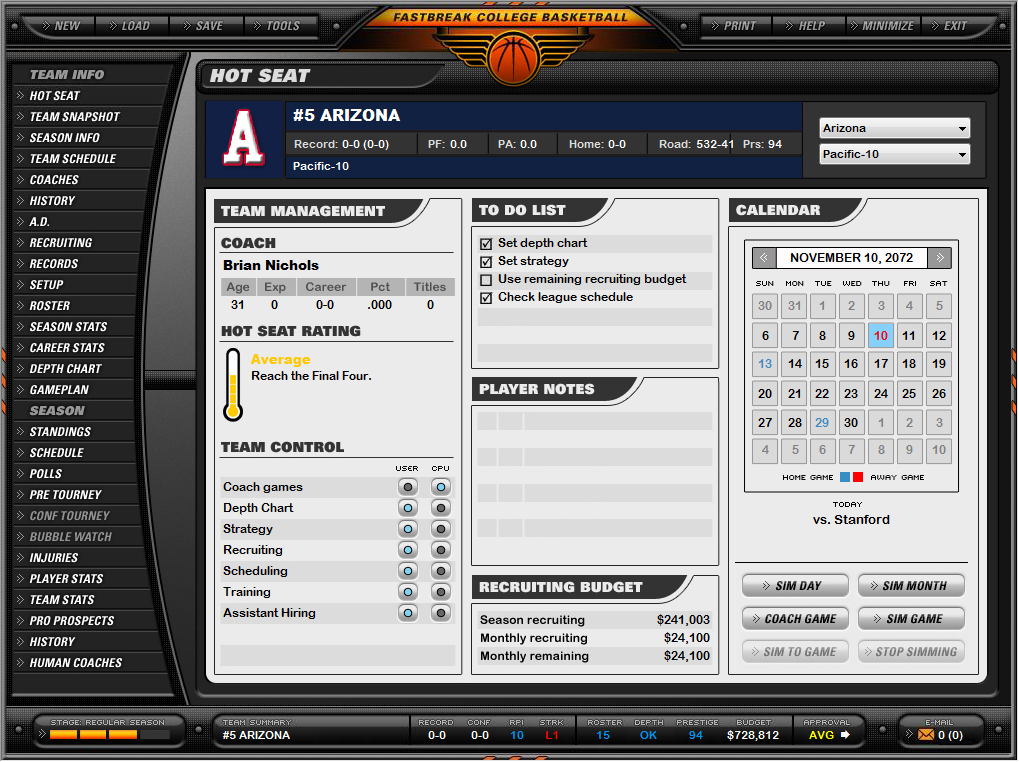
Fast Break Pro Basketball Serial
METHODS We assessed field goals attempted by 27 professional players that participated in the 2014 NBA finals. Data were collected by three researchers through an adapted version of the Technical-Tactical Performance Evaluation Tool in Basketball to systematically analyze all five games of those finals. Descriptive analysis consisted in absolute and relative frequency and inferential statistics were applied through Chi-Square test, Cohen’s D for effect size, and binary logistic regression test. Significance levels were set at 5% and all statistics were applied through SPSS 23.0. DESIGN AND PARTICIPANTS Due to the systematized observation of real game situations, this is an observational research of notational analysis type ( ).
Thus, we analyzed all the FGA taken by professional basketball athletes (N = 27) from the 2014 NBA finals between the San Antonio Spurs (n = 13) and the Miami Heat (n = 14). The sample totaled 718 game units, which represent the five games of those finals. It should be noted that this sample is part of a bigger project that comprises a total of 3737 game units. VARIABLES Although we understand that the term ‘shooting’ normally refers to jump shots or other type of shots in which the ball makes a parabola to the basket, we decided to adopt the term ‘shooting conditions’ to all the FGA analyzed in this study (that includes dunks, layups, alley-oops, etc.).
Fast Break College Basketball 2010 Crack Serial Download. /Roster Form accepting this registration, I hereby release Fast Break Pro and its officers, clients.

The definitions and variables related to this term can be found in. Furthermore, ‘shooting efficacy’ refers to the outcome observed after a FGA, which can result in a FGM or a missed/blocked shot. That said, the independent variables comprised the categories created for: number of passes made per offense (from zero to one, from two to three, and from four to eight passes), offense type (set, fast break, and regained), and shooting condition (pressured, passively guarded, and wide open); the dependent variable was shooting efficacy. In order to analyze the relationship between offense type and shooting efficacy, only offenses that finished with a FGA were included in this study. Considering the first objective of this study (i.e.
Number of passes made vs. Shooting efficacy), we wanted to include in our analysis only passes made that help support destabilizing the opponent’s defense. Buku psikologi pendidikan kuliah. Although during the data collection process we covered all the passes made throughout the games, in order not to have a bias effect on the results, we opted to analyze only those made on frontcourt during set offenses. The reason behind this choice is that fast breaks normally involve a small number of passes ( ), regained offenses include those with less than 24 seconds of possession (i.e.
Players would not have the same time to run the offense), and most of the passes observed on backcourt did not impact the opponent’s defense organization. In order to facilitate the reader understanding the variables analyzed in this study, represents the classification adopted by the authors. INSTRUMENT For collecting data we used an adapted version of the Technical-Tactical Performance Evaluation Tool in Basketball (IAD-BB) ( ), suggested by Ciampolini et al. Using the version of Ciampolini et al. ( ) is justified due to the need to evaluate group actions throughout the game (i.e. Not individually, as indicated by the original instrument) considering the components of shooting condition (called decision making in the original instrument) and shooting efficacy. In addition, Ciampolini et al.